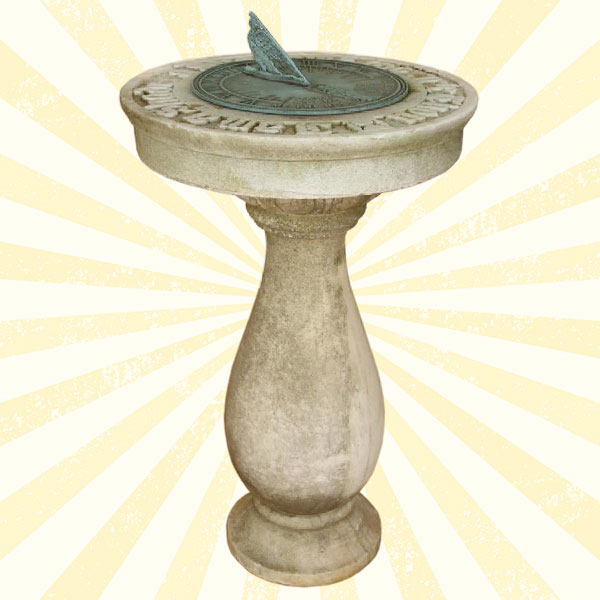Sundials have been used for centuries to tell time during the day. As the sun appears to move across the sky, it casts a shadow across the sundial’s pointer, called a gnomon, onto the sundial surface, which is marked with lines indicating the hours of the day. A sundial can be fairly accurate if the angle of the gnomon and the position of the hour lines are properly aligned.
Stone or metal sundials are attractive and interesting additions to your garden. It is complicated to set a garden sundial, but the summer solstice on June 21st is one of the best times of the year to do it. The summer solstice marks the point that the sun will be highest in the Northern Hemisphere sky—the day with the longest period of daylight.
The sundial pictured here is made of marble and bronze and sold for $1,750 at a Kamelot auction in Philadelphia. It was made about 1880 and is about 30 inches high. The 19 1/2-inch diameter dial has a border that is inscribed “Grow old along with me, the best is yet to be.” But if your garden budget is lower, many sundials auction for less.
Find prices of sundials in our online price guide. And look for more ornaments for the garden – naturalistic benches and tables – in the August 2019, issue of Kovels On Antiques & Collectibles newsletter.




Leave a Reply
You must be logged in to post a comment.